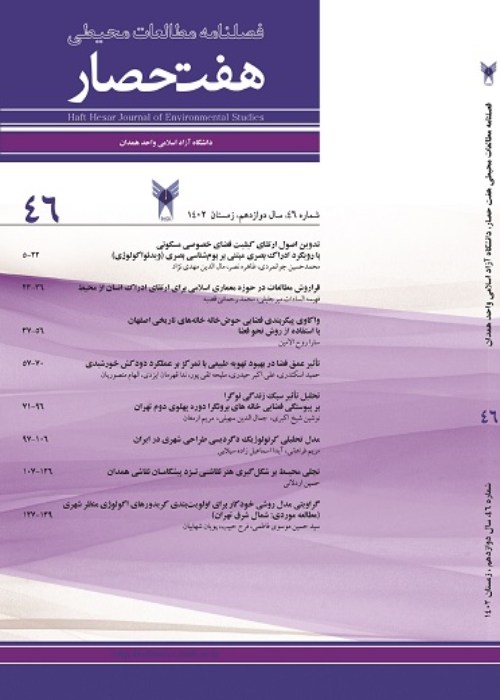The study of the role of physical components of walking-orientation and social sustainability in urban spaces (Case study: Shahrdari square of Rasht)
The concept of Walking-orientation” alongside Social sustainability” started as two revitalizing approaches to civic and social life with the goal of purposeful rebuild of destroyed or damaged cities due to political reasons such as war or social issues like forming a constructive bond between citizens with an insight to reduction of vehicle domination since 60s. But despite existing this thought among a significant number of urban planners and designers community, during the recent century due to the increase of city sizes as well as the density and quantity of vehicles, human beings have lost their priority over them and with their identity being diminished as the main elements of life in a city, they were pushed to the outskirt of cities over time; An event which could put concepts like interactions” and social bonding” at main spaces and nodes of the cities in a serious challenge.
The purpose of this study is to evaluate the cultural sidewalk of Rasht’s Shahrdari square in order to determine the levels of social sustainability and walking-orientation and extracting the affecting components on promoting these two subjects alongside providing theoretical and practical solutions to design high-quality urban public spaces. The present research is of practical type and descriptive and survey method, using interviews and researcher-made questionnaires based on the statistical population of 384 samples, conducted by Cochran’s formula and Morgan’s table.
The results show the levels of social sustainability and walking-orientation at Shahrdari square of Rasht, with an average of 3.11 out of 5, stands in an acceptable situation. However, a notable point about the results of this study is the presence of more than sixty percent of the citizens to meet the living and occupation-related needs, which challenges increasing the level of interactions as the primary function of this physical environment.
Therefore, attracting the citizens in such spaces of a city which contain significant historical, cultural and social aspects, should be based on their personal desire to participate in these environments, not out of coercion and specifically economic and livelihood needs, but voluntarily in order to form high levels of interactions and social sustainability. An objective that ultimately leads to the salvation of the spirit of citizenship.
- حق عضویت دریافتی صرف حمایت از نشریات عضو و نگهداری، تکمیل و توسعه مگیران میشود.
- پرداخت حق اشتراک و دانلود مقالات اجازه بازنشر آن در سایر رسانههای چاپی و دیجیتال را به کاربر نمیدهد.


